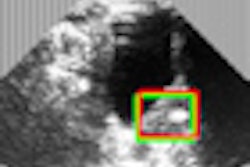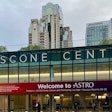MIAMI BEACH, Fla. - In July 2009, the American Society for Radiation Oncology (ASTRO) issued consensus guidelines for the use of accelerated partial-breast irradiation (APBI) to treat women with early-stage breast cancer who weren't enrolled in clinical trials. The guidelines were commended but also criticized as being too limiting. Is it time to revise them?
The question motivated attendees of the society's annual meeting this week to fill one of Miami Beach Convention Center's large halls to hear a review of all APBI data published since 2009, and to participate in a panel discussion that followed.
Shorter course of therapy
APBI shortens the course of therapy by weeks for women who need radiotherapy for low-risk, early-stage breast cancer. It is a shortened course of high-dose radiation therapy that is delivered directly to the lumpectomy cavity, typically over a five- to seven-day period. In addition to the rapid treatment time, its advantages include decreased radiation dose to the breast and chest wall, and a higher percentage of treatment completion by patients.
APBI is still considered investigational because it is not known yet if the treatment is as effective as whole-breast irradiation, in which the breast is treated with low doses of radiation administered five days a week for a six- to seven-week period. Long-term clinical results comparing the two techniques will not be available until the end of the decade.
In June 2008, ASTRO assembled a task force of experts in breast cancer surgery, radiation oncology, and physics to develop a consensus statement on when to use APBI. The 14-member group was headed by Dr. (Maj.) Benjamin D. Smith, chief radiation oncologist at Wilford Hall Medical Center at Lackland Air Force Base in Texas. The consensus statement was designed to provide guidelines for APBI use outside clinical trials, and to serve as a framework to promote additional clinical investigations. It was published in the July 15 issue of the International Journal of Radiation Oncology, Biology, Physics (2009, Vol. 74:4, pp. 987-1001).
Dr. Bruce Haffty, a radiation oncologist at Robert Wood Johnson's Cancer Hospital of New Jersey and a member of the ASTRO APBI task force, explained that the naming of the three categories of patients defined by the guidelines -- suitable, cautionary, and unsuitable -- has caused misunderstanding.
"The guidelines were based on selection of patients for whom there was a reasonable amount of data," he said. "The consensus statement did not assume that APBI would be ineffective for patients outside this category."
The term "suitable" applied to women with breast cancer-related characteristics that could be adequately analyzed using phase II study data, Haffty continued. The term "cautionary" was applied to women with a combination of characteristics for which there were limited data.
"Our intent was to have a radiation oncologist discuss the risks with the patient," Haffty said. "The term 'unsuitable' meant that for this group of women, there was not enough data from phase II clinical trials to make any decision. There is nothing wrong with treating some of these 'unsuitable' patients with APBI as long as they are enrolled in a clinical trial."
The bigger limitation from the perspective of the ASTRO task force members was that they did not have good data to evaluate with respect to differences in techniques and fractionation schemes. Intraoperative radiation therapy (IORT) treatment was outside the scope of the task force's responsibility, Haffty pointed out.
"The document was generated in response to providing practice treatment guidelines for patients who wanted to receive APBI treatment off protocol," he said. "It does not apply to patients enrolled in a variety of phase I, II, or III clinical trials, and it should not discourage novel approaches in prospective clinical trials."
Dr. Beryl McCormick, chief of the external-beam radiotherapy service at Memorial Sloan-Kettering Cancer Center, discussed the use of IORT at her hospital. Memorial Sloan-Kettering developed the Harrison-Anderson-Mick (HAM) IORT system, which it uses to treat a variety of cancers. For breast cancer, 18 Gy is prescribed to 5 mm and has been used to treat a cohort of very low risk, predominantly older patients (median age, 77 years).
The program began 10 years ago, and outcomes have been comparable to use of whole-breast external-beam radiotherapy for this patient category, and also with phase II results of the Electron Intraoperative Radiotherapy (ELIOT) clinical trial. Between 1999 and 2006, the European Institute of Oncology in Milan enrolled 1,246 patients with tumors smaller than 2.5 cm to test the feasibility and tolerance of IORT delivered with electrons. Phase III findings are much awaited and overdue, the panel noted.
McCormick also referenced the Targeted Intraoperative Radiotherapy (TARGIT-A) clinical trial, which enrolled 857 women at 31 cancer centers in 10 countries. The women had been diagnosed with very low risk, localized breast cancer, and they were treated with ultralow-dose IORT. This clinical trial, which began in March 2000, finally reached its accrual goal in April 2010. Two-year data have been published, and results so far have been comparable.
Dr. Frank Vicini, a task force member and radiation oncologist with William Beaumont Hospital, discussed outcomes of the MammoSite Registry Trial, his own clinical trial, and a number of other APBI trials with published data.
The William Beaumont trial is following a matched set of 199 patients treated with APBI and 199 patients who received conventional treatment. When ASTRO's categories were retroactively applied, 44% in both cohort subgroups were suitable, 36% cautionary, and 20% unsuitable.
"At a median 10-year follow-up, the rate of local recurrence showed no statistically significant difference in this small dataset between the two treatment groups," he said. "There also was no statistically significant difference when both groups were evaluated based on the ASTRO categories. It was nice to see in our study that the guidelines did not pick out the winners and the losers, so to speak."
As one would expect, Vicini noted, estrogen receptor status and tumor size were both predictors of distant metastases.
"Guidelines should be used to put patients in certain categories when trying to assess risk and to select optimal patients for the APBI procedure," he said. "I personally believe that we should revisit the ASTRO guidelines and incorporate more recent data." There are now more than 14,000 women who have received this treatment.
Haffty and McCormick disagreed with him. "Although many of us think that it's OK for some patients in the cautionary group to be treated outside a clinical trial, I don't think that there is enough data to change the guidelines."
It would be more prudent to wait for data from the nine APBI clinical trials under way to provide the evidence that radiation oncologists base their practices on, McCormick noted.
Vicini strongly recommended that the category names be changed. Because of the "cautionary" label, some insurance companies would not pay for APBI in patients deemed to be good candidates, he said. And "unsuitable" should be changed to "investigational." The panel concurred and attendees seemed to agree.



















